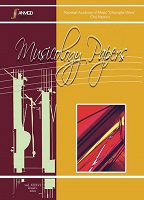Archaeo-Choreographic Features of the Arcanul Dance
Archaeo-Choreographic Features of the Arcanul Dance
Author(s): Marian-Andrei MezdreaContributor(s): Marcella Magda (Translator)
Subject(s): Archaeology, Cultural history, Music, Cultural Anthropology / Ethnology
Published by: MediaMusica
Keywords: Ethnochoreological study; choreographic features of the "Arcanul" dance; Arcanul in contemporary times;
Summary/Abstract: Starting from the premise that the Arcanul dance from Bukovina is a soldier’s dance, this paper follows two lines of research on this topic: the origin of the dance, but also whether or not it belongs to the soldiers’ dance category. The information we have had access to strengthens the hypothesis that the Arcanul dance does not have its roots in Bukovina, but rather that it was taken to the mountain area by the shepherds from the commune of Sângeorz. Those who still dance Arcanul in the Bukovina region (the only region where we still encounter this dance) claim that this dance originates from their villages, although the previous sentence contradicts this claim. In Bukovina, men were not drafted to the army by force, but young boys were often tricked into the recruitment trap, as it happened with Nică's teacher in Ion Creangă's Amintiri din copilărie [Childhood Memories]. Thus, we consider that the “Arcanul” dance, in its current form, is not a soldier’s dance, but rather a stage adaptation of a legendary event. It is essential to consider the origins and history of the dances or customs that we pass on as teachers, ethnographers, ethnochoreologists or other professionals in this field. By researching through any means, we can discover and better understand the folklore that we still have the chance to entrust to our children and young people in its authentic form.
Journal: Lucrări de Muzicologie
- Issue Year: 36/2021
- Issue No: 1
- Page Range: 47-61
- Page Count: 15
- Language: English
- Content File-PDF

